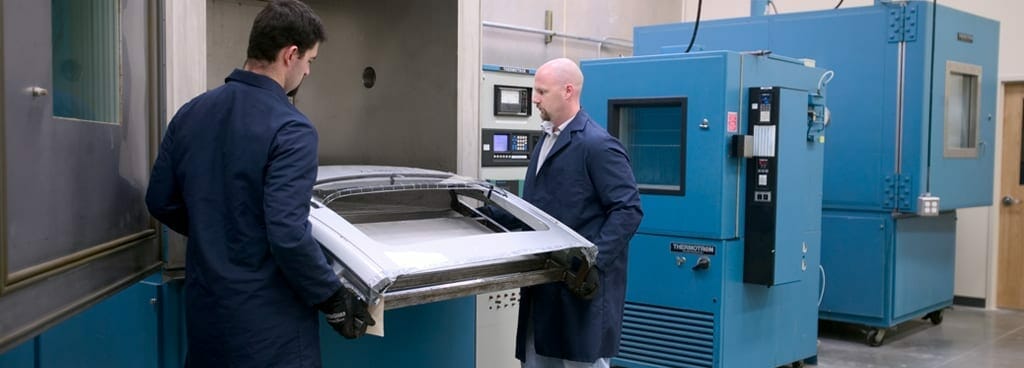- Home
- Services/IndustriesServicesindustries
- About Us
- LocationsStatesAccordion ContentAccordion ContentAccordion ContentAccordion Content
- Job Openings
- Quick Links
- ATS Family

Temperature Cycling Testing
ATS performs temperature cycling testing by exposing materials to extreme temperatures. Using this method, we predict products’ durability and longevity.
Reasons for Thermal Damage
Repeated temperature shifts put great amounts of stress on products and equipment. The problem arises from the tendency for materials to expand and contract when exposed to heat and cold. Different materials have different thermal properties however, such as how rapidly their form changes in oscillating temperatures. Because products are typically made of multiple materials, they may be susceptible to failures at the joint interfaces induced by thermal cycling.
Temperature fluctuations exacerbate any incompatibilities between component materials’ respective thermal characteristics, which causes increasing tension between them. Eventually, cracks form to release all that stress, the result of undergoing thermal cycling. This sort of breakdown is unacceptable, especially in circumstances that rely on the structural integrity of that product to avoid disaster.
To prevent such a scenario, manufacturers send samples of their products to thermal testing labs like Applied Technical Services to undergo Temperature Cycling Testing. Such testing help uncover compatibility issues between component materials and the product’s resistance to thermal cycling and potential structural failure.
About the Method
The test is performed by placing the test sample into one of our many thermal chambers and exposing it to cycles of high and low temperatures over time. ATS technicians set maximum and minimum temperatures anywhere between -60°C and 170°C in multiple humidity levels, determined by the standard to which we are testing the material.
Depending on the needs of the sample, our units can achieve ramp rates as high as 7.5°C/minute; maintaining fine control over these variables allow ATS to ensure the most accurate findings. Our small fleet of thermal cycling units come in varying sizes, as large as 14’ x 10’ x 11’, ensuring that our lab can accommodate samples of all sorts. The results can be helpful in failure analysis after an incident or pre-production quality management.
ATS and Temperature Cycling Testing
For over 50 years, ATS has provided peerless testing, inspection, and engineering consulting services. Our clients are located around the world, and hail from a variety of industries. Our Materials Testing lab is ISO 17025 (A2LA) accredited to perform this method of testing to industry standards — such as GM 9505P2, IEC 68–2–30, BMW TS 308, and PrV303 — but our technicians are experienced in conducting it to custom client parameters as well.
ATS technicians provide accurate results promptly because of their familiarity with the methods of temperature cycling testing used in various industries, and their access to the powerful tools that enable them to return the important answers about your product. Entrust your sample to ATS — we take a closer look.

Request Form
"*" indicates required fields
